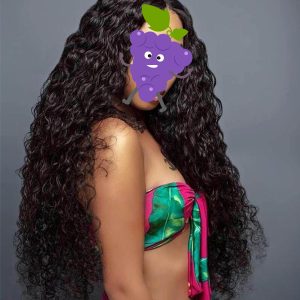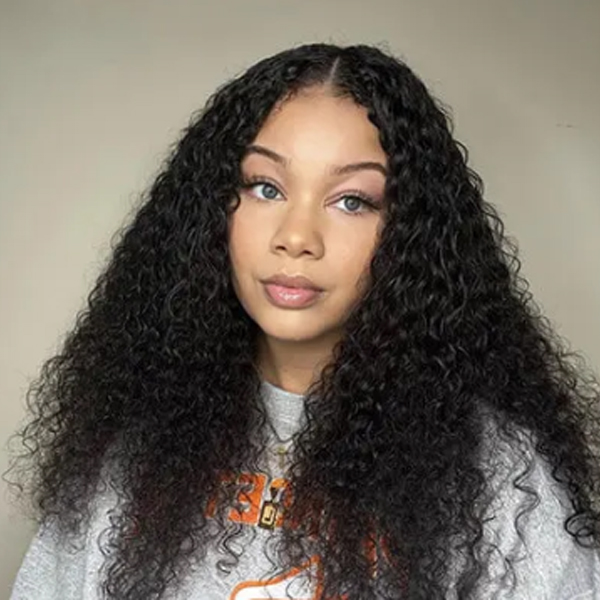How To Get Water Wave Hairstyles: The Must-Have Look For Summer In 2022
Last year, we saw mermaid waves rising up the ranks to steal the top styling spot from beach waves. But for 2022, water waves are making waves and offer a more relaxed and natural-looking reincarnation. For example, we have seen this top hair trend spotted on many celebrities like JLo, Lizzo, Zendaya, Christina Aguilera, Shay Mitchell, Megan Fox, and Kylie Jenner.
Whether you’re in need of a style refresh or you’re eager to stay on top of trends, keep reading to learn exactly how this trendy effortlessly chic style differs from the other waves-inspired hairstyles and how to achieve water wave hairstyle at home.
What Are Water Waves?
Water waves hairstyles are defined by “a flat and S-shaped wave” that creates a soft ‘C’ curve in the hair. Inspired by Renaissance hair in the paintings of Sandro Botticelli, this style is worn extremely long and unstructured with a natural fluffy wave. It looks extremely youthful, relaxed, feminine, and luxurious in a natural way.
The look delivers a smidge of volume similar to what straight and wavy hair types would achieve by air-drying. Even some people think this style looks strikingly similar to how your hair looks once it’s dry after stepping out of the pool, ocean, or shower. Of course, the premise is you have a naturally wavy hair texture.
As the perfect hairstyle for busybodies and lazy girls alike, water waves are extremely suitable for any length, texture, or type. More importantly, it features barely-there ripples that mimic flowing water rather than defined curls and waves and fit perfectly with the increasing temperatures.
So, what’s the difference between beach waves, mermaid waves, and water waves?
What Is The Difference Between Beach Waves, Mermaid Waves, And Water Waves?
Beach waves are inspired by wind-swept, salt-licked strands featuring lots of movement and oomph at the crown; while mermaid waves tend to be longer (waist-length with wispy ends), wavier (loosely crimped kinks rather than bouncy twirls), and are supposed to be like the texture of hair that’s been fresh out of the water and then dried a little under the sun.
In a word, water waves are looser and less structured than mermaid waves. Compared to beach waves, water waves have less texture and a softer look overall.
How To Get Water Waves
Although water waves may appear effortless and give off that I-woke-up-like-this vibe, they actually require multiple steps and products to achieve. Scroll on for a few super easy ways to achieve effortless-looking water waves look— one of which doesn’t require any heat at all.
1. Use A Curling Iron
One of the most popular ways to accomplish water waves is to use curling iron almost like a crimper.
After quickly running the iron over a small section of hair to smooth, start at the root and ping-ponging between an overhand and underhand approach.
Then move down the length of the piece, gently curving the hair around the barrel.
Once your waves have been set, brush your hair with your favorite paddle brush all out in the same direction. Finally, apply some oil to your hair.
This technique works well with all hair lengths and offers better control than other curling tools.
2. Create Waves With A Flat Iron
Except for curling iron, a hair straightener is a good tool to create water waves.
Before you reach for that hair straightener, we suggest you use a heat protectant and hair oil first. It can prime the hair to keep hair feeling soft and silky and protect it against heat damage, as this look depends heavily on heat to achieve sleek, graceful waves.
Then section off a strand of your hair, clamp the straighter from the top of the strand and maneuver the straighter up and over for one to two inches to create volume at the roots.
Next, twist the straightener in the opposite direction and pull down one to two inches. Repeat this movement all the way down the strand until the remainder of your hair is curled.
For the most natural look, remember to pivot the straightener for each section, alternating the waves so that some sections go toward the face and others go towards the back of your head.
In the end, you can add an anti-frizz treatment to help keep the waves intact, without the stickiness that can result from a hairspray.
Follow the following video to create these soft water curls in your hair.
3. Sleep In Braids
Besides that, You could also create water waves by twisting your hair into braids while you’re sleeping. Braids are the best heat-free way to create a look that doesn’t require blowing the hair straight with a blowdryer and then using a flat iron.
First of all, while your hair is still damp, gather your hair into some loose braids down the back and secure the end with some silk scrunchies. While you’re snoozing, those soft waves are forming.
You may need to apply a bit of frizz-fighting oil or serum to your hands and smooth through your strands while you take down your braids. In this way, your waves stay in place.
Finally, when you wake up, release the braids, and don’t forget to go over your hair with a wide-toothed comb or your fingers for that effortless effect.
To help the waves stay put all day, spritz a flexible hold hair spray all over.
And if you’re dealing with dryness or split ends, you can coat the tips with a hydrating, lightweight hair oil like argan oil.
Even if your hair does have a curly or wavy texture to it, you can still get the water wave look. Just need to u a curl cream and let it dry naturally to keep those waves in place.
If you’re intrigued by water wave hair, we sincerely recommend some water wave hair weaves human hair and human hair wigs at an affordable price. Look at these water wave hair products to pick up your favorite one.




